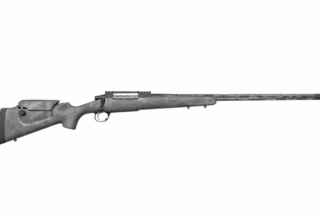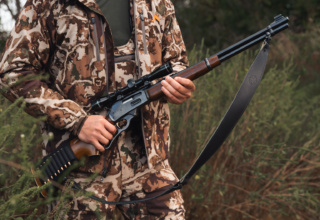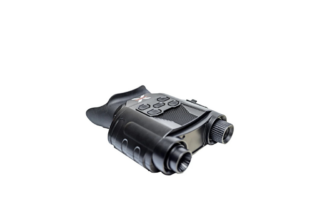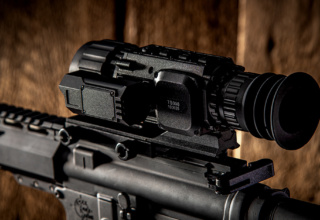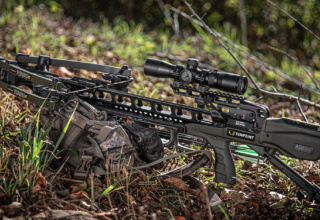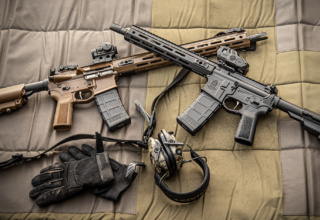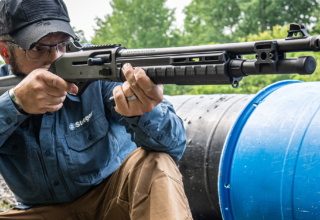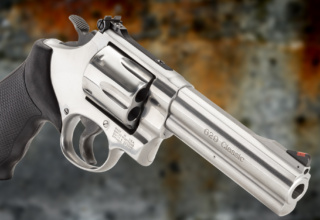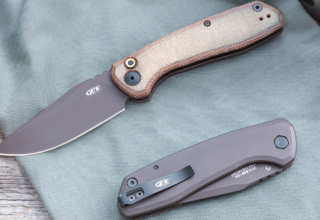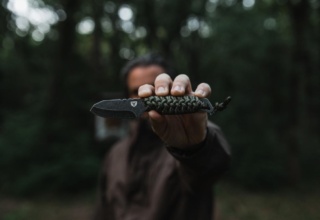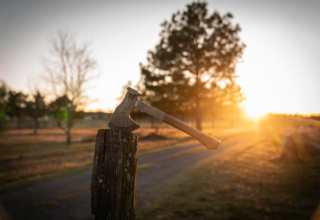Since the start of the compound bow era nearly 50 years ago, manufacturers have worked diligently to make their products lighter and faster.
It’s a task they have conquered exceedingly well, but always with a subtle “swimming upstream” caveat. With these faster-shooting, lighter-weighing, and smaller-profile bows comes an increased propensity for noise. All that energy has to go somewhere, and since no arrow can absorb 100-percent of a bow’s juice, that excess energy transfers throughout the bow and to anything attached to it. The result is vibration and noise that is both annoying to the shooter, and alarming to game animals.
Some folks wrongly believe that speed makes up for noise. In other words, they think that a fast bow and ultra light micro-diameter shafts can deliver a lethal shot before a game animal has time to react. While it is true that a fast-flying arrow can help mitigate animal flinching and string jumping to some degree, it doesn’t eliminate the problem. Whitetail deer, in particular, are usually wound tight as a banjo string.
[quotes quotes_style=”bquotes” quotes_pos=”center”]”No matter what type or how many accessories you have on your bow, make sure everything is tightened down.”[/quotes]
If you have a 30-yard shot on a buck that is looking right at you, most likely he will be moving before your arrow reaches him. And as veteran bowhunters know, the difference between a lethal, ethical shot and a poor hit can be measured in half-inch increments. Even the slightest flinch of a game animal caused by bow noise can be enough to put your arrow’s point-of-impact somewhere you don’t want it to be.
Quietness is a key selling point for any bow manufacturer, but no matter how quiet a bow is in stock form, no one shoots a stock bow. Once you add the requisite sights, quivers, and possibly a bow-mounted camera, you’ve just introduced a boatload of potential noise makers to your setup.
Fortunately, solutions abound, and while there is no one magic bullet for quieting a bow, the cumulative effects of strategic noise reduction can stack the odds in your favor. Here’s how you do it…
String Dampers
Pluck a string and it vibrates. Placing rubber string silencers, such as the TRUGLO TRU●BLOCK™ String Silencers, between the strands of your bowstring will significantly reduce that vibration and its subsequent noise. Usually two rubber-type string silencers are sufficient for most bows—one between the serving and the upper cam and one between the serving and lower cam. Every bow’s harmonic “sweet spot” is different, so experiment with silencer placement by sliding them up and down the string to see where they are most quiet.

Arrow Weight
Modern bowhunting equipment achieves unprecedented speed through a combination of mechanically efficient bow design and lightweight arrows. One of the downsides of lightweight arrows, though, is that they do no absorb as much of a bow’s energy as heavier arrows. That inescapable inefficiency means that the energy not transferred to the arrow goes into the bow and its accessories, resulting in vibration that not only causes noise, but also can loosen screws and other attaching hardware.
Light versus heavy arrows is a debate in bowhunting circles, but no matter which camp you fall into, you cannot deny the physics. If you want to help quiet your bow, use the heaviest arrow you are comfortable shooting.
Stabilizers
Originally designed to improve a bow’s stability, stabilizers have become an important tool for absorbing vibration and noise. For a hunting bow, which necessarily must use a short stabilizer, that’s asking a lot. The good news is that advances in sound dampening materials and engineering have led to bow stabilizers that are highly efficient in vibration absorption and, in some cases, are even adjustable.
Among the most advanced hunting stabilizers on the market today are TRUGLO’s new Carbon XS™ stabilizers. Available in 7- and 9-inch lengths, these aesthetically pleasing stabilizers utilize a composite performance material construction combined with a unique continuously curving design for balanced energy transfer and adjustable weight suspension system that allows you to custom-tune the stabilizer for your particular shooting setup.

Another adjustable stabilizer from TRUGLO is the TRU●TEC™ Carbon Pro with a carbon-composite exoskeleton and adjustable weight suspension system as well. If you’re a screw-it-on-and-go type, check out the DEADENATOR XS™ in black or your favorite licensed camo pattern. Whichever model you choose, you will enjoy a reduction in both hand shock and noise.
Quivers
Probably the noisiest bow accessory is the arrow quiver, as many quivers use mounts that have notoriously loose tolerances. This “slop” between the mount and the quiver body can create a significant racket when you release the bowstring. You want a quiver that has a tight, no-rattle fit between the quiver body and the mount, a thick foam hood insert to keep the broadheads from rattling, as well as tight arrow grippers to keep them secure.
TRUGLO goes one step further in quiver noise reduction with the TRU●TEC™ LT with its Postive-Lock mounting system for smooth one-hand removal and ultra-secure attachment to the bow. This quiver comes with five color-matching rubber inserts that help absorb vibrations. Simply pick your color and insert the damper in the quiver frame.

Bow Sights
In addition to quivers, bow sights can be big noisemakers. Most are comprised of many small parts that are held together with screws. The more parts there are, the greater the potential for noise—especially at any metal-to-metal contact points.
Buying a precision-made, high-quality bow sight will go a long way to ensuring quiet performance. So will verifying that all adjustment screws and attaching hardware are snug. It’s a good practice to check the tightness of all bow sight hardware after each practice session and before each hunt.
In addition to offering bow sights with the quality materials and construction, many TRUGLO sights such as the CARBON HYBRID™ Micro also feature the TRU●TOUCH™ Soft-Feel Technical Coating. This finish not only looks and feels better than painted or anodized metal, the coating’s inherent sound-dampening qualities help put the “hush” on one of the bowhunting world’s most raucous accessories.

Arrow Rests
The other must-have accessory that has the potential for creating a racket is the arrow rest. As with quivers, arrow rest noise is proportionate to its material and construction quality. TRUGLO engineers its drop away and capture rests such as the CARBON XS™, UP•DRAFT™, DOWN•DRAFT™ and STORM™ to be quiet both during and after arrow launch. They accomplish this through close tolerances and precise parts fitment, as well as the selection of materials used for the “hard” components and the composition of the arrow shelves and pads.

Of course, even high-end arrow rests like these can use a little extra help in the quiet department—not because of bow vibration as much as arrow “clang.” We’ve all dropped an arrow off the shelf and cringed as the unnatural “clank” echoed through the still woods. You can keep this potential disaster to a minimum by adding moleskin or similar adhesive material to the inside of your rest and around your risers’ window and shelf areas.
But Wait, There’s More…
We said earlier that noise dampening is a cumulative effort affecting many areas of your bow. A couple of items increasingly found on factory bows that also contribute to noise reduction are limb dampers (rubber attachments that fit on or between your bow limbs) and string stoppers (a device that cushions the string upon release). Your particular bow may or may not have come with these devices and may or may not be able to accommodate them, so check with your local pro shop for more info.
Finally, no matter what type or how many accessories you have on your bow, make sure everything is tightened down. Even the smallest loose part can make a disproportionally big noise when you launch an arrow. Putting a few Allen wrenches to your bow between each target practice and hunting session can go a long ways to making sure your bow sounds more like silence and less like a hickory nut hitting a tin roof.


